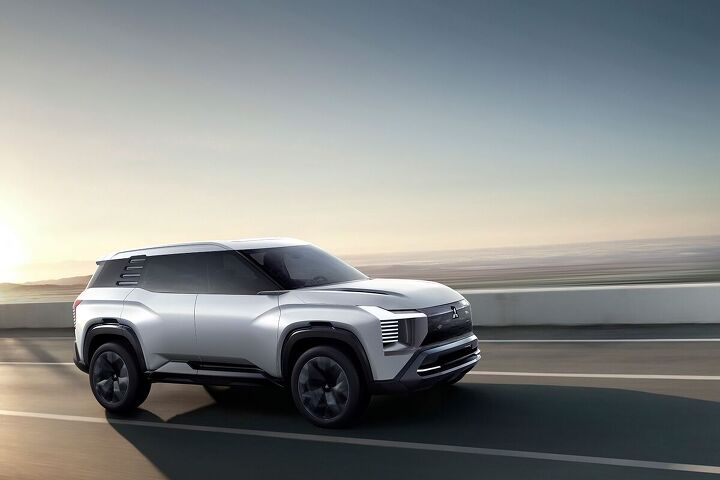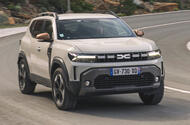Mitsubishi revealed a boxy, three-row concept at the Philippine International Motor Show this week, stating that the car would eventually spawn a production model intended for global sale. While this means slotting the vehicle into lineups that are already biased toward crossovers, the company has enjoyed decent success doing this in the past.
The automaker claiming that the vehicle will primarily be aimed toward the Association of Southeast Asian Nations (ASEAN) market doesn’t necessarily mean that’s where it’ll stay. The concept could have just easily dropped here to double as the next Mitsubishi Outlander, as it’s likewise biased toward front-wheel drive and exists as a boxy three-row crossover. However, it’s probably going to be missing some things that Americans want when speced for ASEAN consumers and will almost certainly be built to a price point designed to cater to the far side of the Pacific Rim — not that North American residents are seeing their pricier vehicles representing a stellar value these days.
Indonesia, Vietnam, Laos, Brunei, Thailand, Myanmar, the Philippines, Cambodia, Singapore and Malaysia may be smaller countries. But they’re relatively populous and currently represent a significant portion of Mitsubishi’s overall sales. The ASEAN market is actually Mitsubishi’s largest by volume, outpacing North America, Europe, and even China by significant margins. With the brand having a focus on affordable models, Mitsubishi has intentionally targeted the region as a growth market and it appears to be paying off.
Regardless of where Mitsubishi sells the DST Concept, or whatever production model it evolves into, it would be foolish not to market it hardest where the business thinks it’ll do the most business.
As stated the DST will be a front-wheel drive model (at least initially) with above-average ground clearance (for a crossover) and five distinctive drive modes (two of which will be wholly dedicated to off-road surfaces). But that’s about all Mitsubishi is willing to share right now.
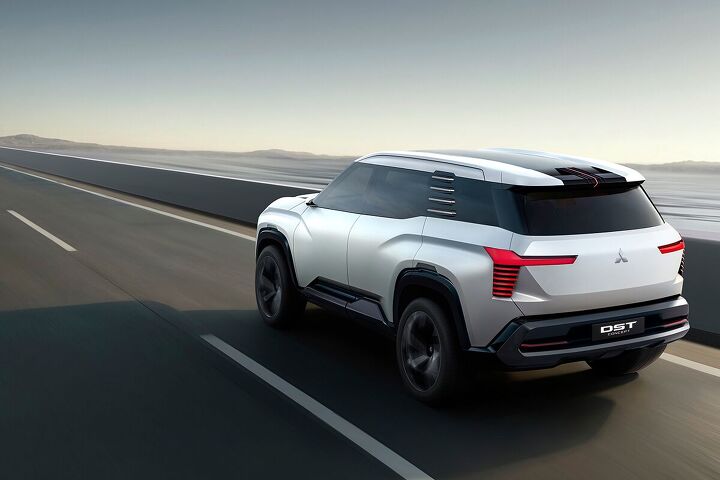
Without the company sharing additional information about mechanical components, the DTS really seems like the company simply showing off future design cues while announcing another SUV is about to be added to its lineup. The model apparently won’t be supplanting any existing vehicles (at least not any sold in Asia) and is styled in a manner that seems like the natural evolution of some of its products.
Horizontal lines have become a big thing for the brand. While this cue is primarily limited to the grilles and LED taillights of the SUVs sold on Western, Asia has seen more horizontal lines added to the running lights. Body shapes have similarly been squared up in recent years, making vehicles look boxy and more imposing.
The updated Triton pickup and Xpander models showcase this rather well. However, the Xforce crossover is probably the production model showcasing where the corporate design is heading. Like the DTS Concept, it features those thinly striped LED running lights. But the DTS takes everything further, adding them to the back of the car. The C-pillar also features a few stripes of its own.
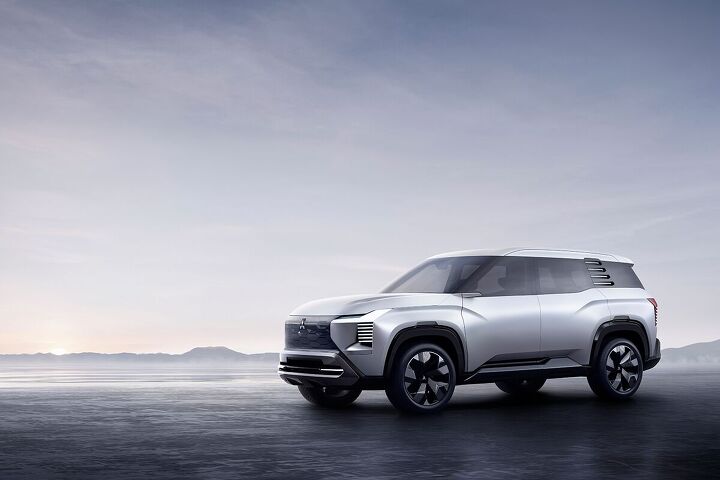
“The Mitsubishi DST Concept is an embodiment of an all-new three-row SUV to be launched during our current mid-term business plan Challenge 2025, and the production vehicle will be rolled out primarily in the ASEAN region including the Philippines starting in fiscal year 2025,” stated Takao Kato, president and chief executive officer for Mitsubishi Motors. “The all-new SUV will follow in the footsteps of the Xpander crossover MPV that was born in the ASEAN region and grew to become a model beloved by customers around the world, and the Xforce compact SUV that has been highly acclaimed since its introduction in fiscal 2023. With the aim of making it a global strategic vehicle, we will further develop it as a distinctively Mitsubishi SUV that expands our customers’ range of mobility.”
The stated goal of the DST is for the Japanese automaker to manufacture a classy, spacious SUV with the ability to handle bad weather and poor road conditions without much trouble. But it doesn’t look like off-roading will be its main focus and Mitsubishi isn’t really offering any mechanical information. As a presumed global vehicle, the DST will presumably be fitted with whatever powertrain the company has access to and feels confident will sell on the relevant markets.
The interior, however, does seem to be set up to maximize interior space. It’s extremely minimalist in terms of switchgear, with almost every control either being located on the central touch screen or some touch-based pad situated on the doors. While it seems doubtful that nearly every button inside the production vehicle will be swapped for touch tech, automakers have been running with the trend (despite pushback from customers) because it’s often cheaper to manufacture and provides additional in-car marketing opportunities.
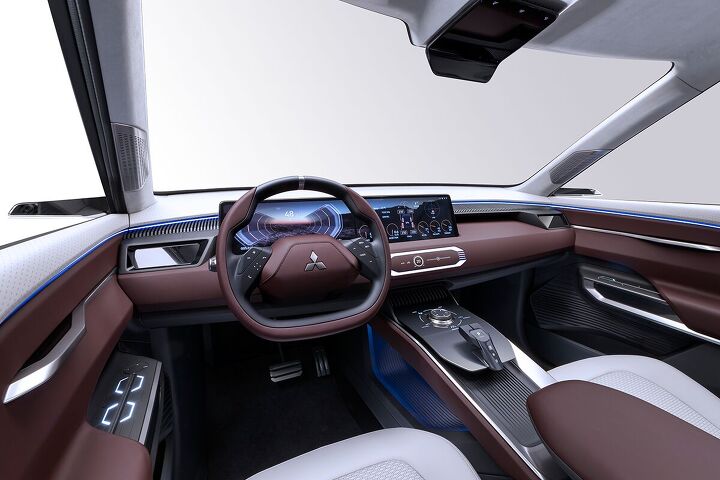
At any rate, we don’t know how much of the concept vehicle will be retained. But it seems reasonable that the basic shape and a significant number of design cues will eventually see assembly. It also seems like Mitsubishi is trying to go upmarket a tad with the DST. The preview images make it look as though the interior is loaded up with soft-touch materials that surround occupants — going beyond just being allocated to the parts of the car the manufacturer is sure you’ll end up touching on a regular basis.
The third row is also supposed to be fairly spacious, clearly prioritizing passenger comfort over maximizing cargo volume. However, this may be indicative of nothing beyond the desires of the concept’s design team.
Mitsubishi plans on revealing more information about the model in the months ahead and says that a production version of the concept (unlikely to be named DST) should arrive before the end of 2025. Just don’t expect our market to see the model before the Pacific Islands have had their fill.
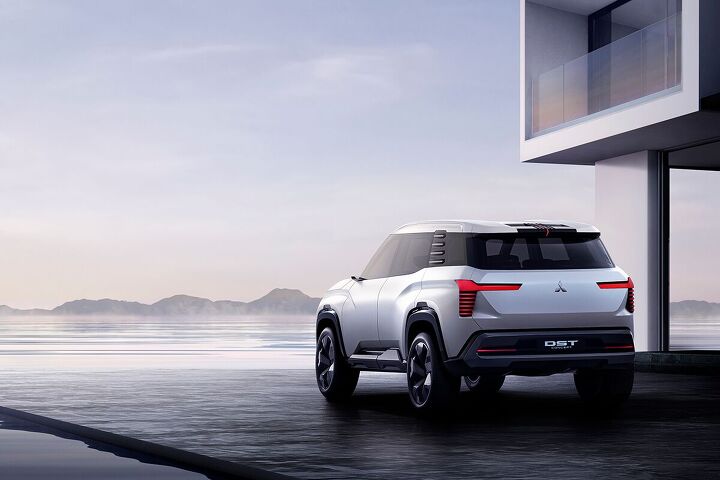
[Images: Mitsubishi Motors]
Become a TTAC insider. Get the latest news, features, TTAC takes, and everything else that gets to the truth about cars first by subscribing to our newsletter.
Source: The Truth About Cars
